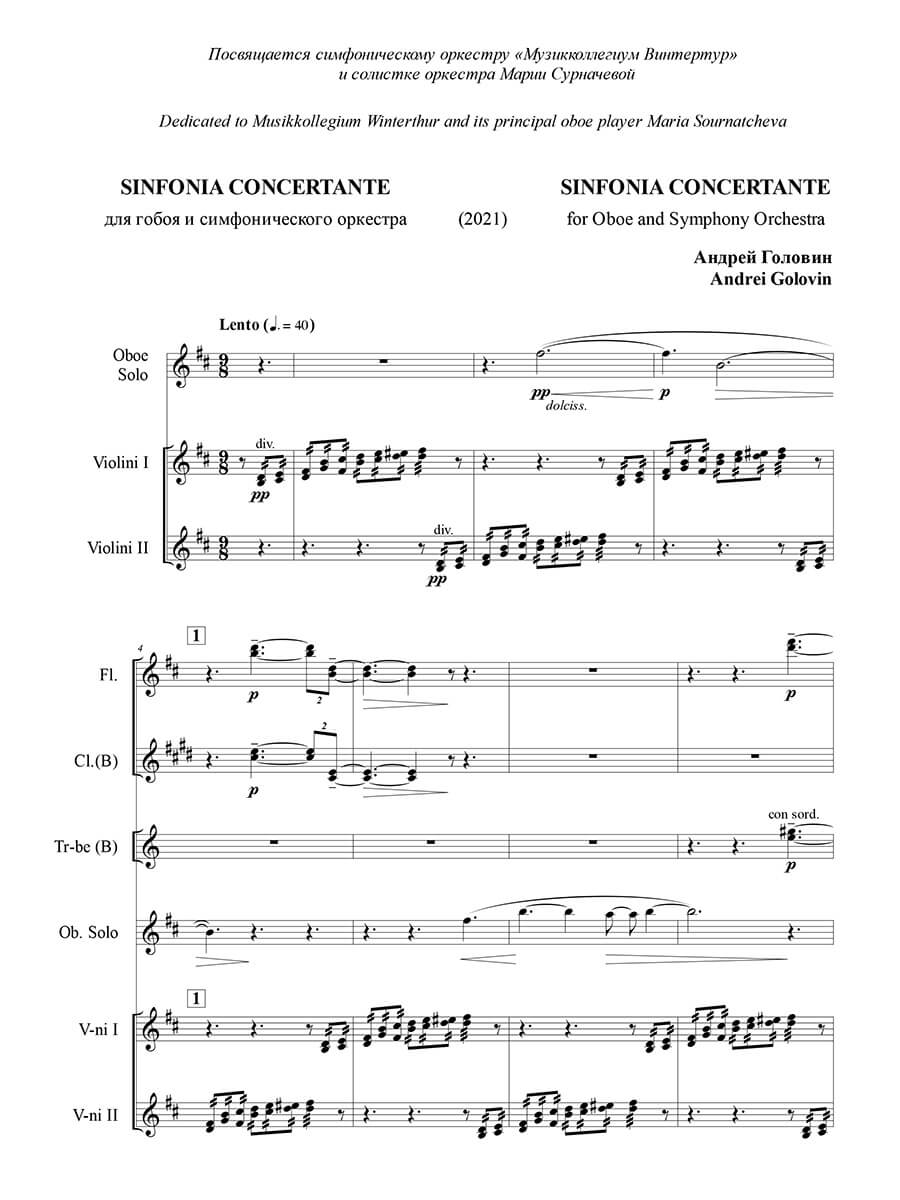Sinfonia Concertante for oboe and symphony orchestra (including oboe part / first print)
Golovin, Andrei
21,00 €
Preface
Andrei Golovin – Sinfonia Concertante for oboe with symphony orchestra
The initiative for the composition of Andrei Golovin’s Sinfonia Concertante came from Maria Sournatcheva, long-established principal oboe of the Musikkollegium Winterthur in northern Switzerland and an experienced performer as soloist and in chamber music. In 2019 she requested that Andrei Golovin write an oboe concerto for her. In agreeing, Golovin immediately stipulated that the work should be a sinfonia concertante. The implications of this were that the obligatory virtuoso element would be avoided – the writing is nonetheless extremely demanding in terms of breathing and dynamic control – and that the oboe would be ‘the principal voice in dialogue with the orchestra’. In this way Golovin was following on from his First Symphony, which is a sinfonia concertante for viola, cello and orchestra, and his Second Symphony, a sinfonia concertante for viola and piano with orchestra. In the twentieth century a Symphony-Concerto for cello was written by Prokofiev and a Cello Symphony by Britten, but in contrast to the extreme virtuosity of those works the oboe’s character in Golovin’s Sinfonia Concertante is, in the composer’s words, ‘mostly lyrical.’
The oboe is complemented by a ‘soul-mate’, a cor anglais seated in the orchestra, which prolongs and echoes the soloist’s thoughts. The work is in one compact movement, and the soloist is conceived by Golovin as ‘a character who, time after time, plunges deeper and deeper into himself, into his own world, and does not respond to the intrusions of the orchestra, which consistently become more and more fierce. In the general climax the image of the destructive force in the orchestra grows to its full potential.’
It may be added that the poignant harmonies and questing lines of the soloist’s music are contrasted with a much more forceful orchestral idiom. The ‘general climax’ comes in the third tutti section, after the soloist’s brief cadenza, and here, ‘as a symbol of the absolute destruction of the work’s tonal construction’, an ‘extreme exacerbation’ of the musical language develops into the exposition of a twelve-note series (a serial device, implying atonality). Golovin comments: ‘This was an important decision and it must be said that it was absolutely not a result of theoretical speculation… I heard this, I didn’t contrive it!’ …
Full preface / Ganzes Vorwort > HERE
Score Data
| Edition | Repertoire Explorer |
|---|---|
| Genre | Solo Instrument(s) & Orchestra |
| Size | 210 x 297 mm |
| Printing | First print |
| Pages | 56 |
